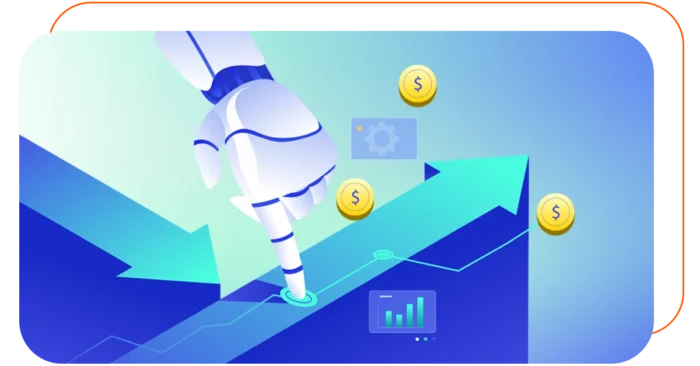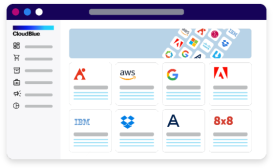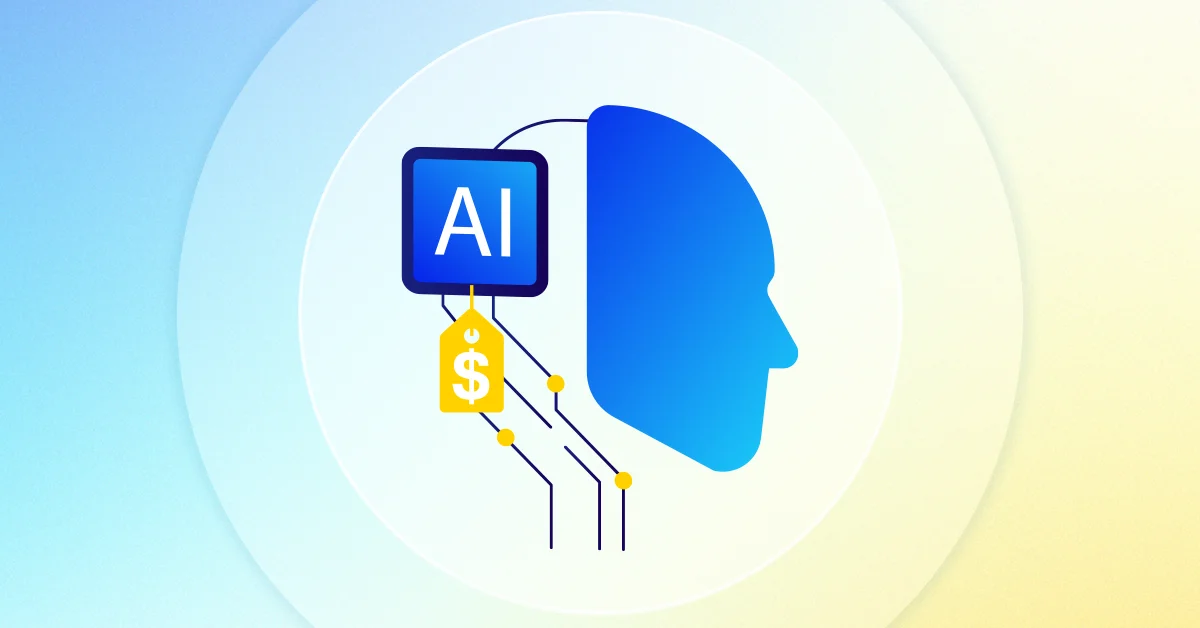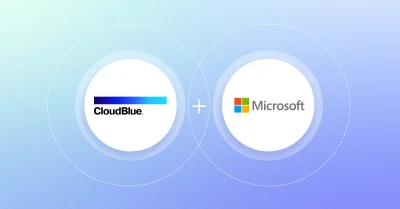Introduction
In today’s B2B world, digital selling and commerce is taking over from more traditional forms of transacting business. In the early days of this transition, the shift from traditional to digital was basically a shift of the same revenue. More and more, what is becoming evident is that digital channels are now generating net new revenue for independent software vendors (ISV).
ISVs are enjoying greater revenue growth through online marketplaces and platforms. This is a sign that there is a distinct segment of B2B buyers that prefer to transact only through digital channels.
Pricing in B2B is more complex than B2C because of several factors. These are:
- Manual and custom pricing that is applied to win deals
- Large and rigid catalogs with standard prices and tiers
- Slow negotiation cycles
In the new world however, static price lists and slow, manual negotiations are becoming relics. AI-driven pricing and negotiation tools are reshaping how businesses trade, offering speed, precision, and adaptability that human teams alone cannot match.
Smart business are thus leaning on AI not just to automate pricing, but also improve and expedite their negotiation and deals.
The B2B Pricing Challenge
Let’s review some traditional pricing methods in the B2B world. These are:
- Cost-plus
- MSRP
- Competitor benchmarking
- Manual discounting
What makes B2B pricing more complex is that deals are often signed based on volume, custom contract terms, custom contract length, relationship history, and other custom configurations. Deals are negotiated between people, and sales staff get involved, with long email chains and manual approvals. All of this takes significant time and effort.
When you consider that the actual B2B buying process is complex, variable, and relationship-driven, it becomes evident that such a dynamic market demands intelligent, dynamic pricing based on all these factors.
What is Intelligent Pricing?
Intelligent pricing has to cater for the complexities in the B2B environment which were described above. A large, fixed catalog with fixed prices that are difficult to update is the complete antithesis to this more intelligent approach. So what is intelligent pricing?
An AI-driven pricing approach uses real-time data and predictive models to adjust prices dynamically. Some of the key inputs that this approach must take into account are:
- Market demand: Think Uber, for example, which takes this into account
- Competitor pricing: At least at the lower tiers of pricing, there is plenty of pricing information available in the public domain. Also, applying knowledge of the “willingness to pay” of the buyer for your product.
- Inventory and supply chain data: For physical goods, this is clearly important. For digital goods, there are still important supply chain considerations such as cost price, reseller versus end consumer pricing, currencies and exchange rates, and margin management
- Buyer behavior and historical deal data: Applying knowledge of the price sensitivity of the buyer, as well as what deals have been closed in the past, and at what price
- Custom inputs: Custom contract terms, custom volume tiers
The benefits of an intelligent pricing approach are optimized margins, faster (and more accurate) quote turnaround, and a better alignment with market shifts.
AI-Powered Dynamic Negotiation
By feeding pricing, custom deal, custom offer, volume tiers, contract terms, market demand, competitor pricing, pricing rules, and other relevant data into AI, it is possible to have AI handle real-time, rules-based and freeform negotiations. This can be either as a direct engagement with customers who are seeking pricing, or it can also assist sales teams to formulate better offers.
For sales teams especially, AI can help to:
- Suggest optimal discounts and deal terms, based on what has gone previously
- Formulate quotes automatically, and respond to the customer with the quote
- Suggest bundling options dynamically
- Learn from previous deals to inform future offers
- Come up with a smarter and more accurate price counter
- Adhere to the margin and financial requirements of your business
AI, being unemotional, can be trained to always make an optimal pricing offer that benefits both the buyer as well as the seller. This is the “win-win” that businesses seek in any negotiation.

The Competitive Edge
With this approach, deals can be closed faster with customers, and it is possible to reduce the back and forth through AI-guided offers. Apart from speed, AI-guided offers will also increase the deal consistency, and AI can help to ensure that the deals made across teams and regions are more consistent with each other.
Consider the alternative where each team is making local decisions to win deals, but in an inconsistent way. Even if there is a central pricing team that approves all deal prices, this team would still benefit on AI’s guidance to make sure that there is a coherent method to the pricing and discounting.
Pricing teams are still made up of people, who can make inconsistent decisions unless guided by data. People also leave organizations and what remains is the data that is left behind by previous deals. Let historical data and predictive models guide decision-making, rather than gut feeling.
Real World Applications
Real world applications of dynamic AI-driven pricing exist in several industries including manufacturing, services, wholesale distribution, tech hardware, cloud, and SaaS. One of the most cited examples, albeit in B2C, is in the ride share service industry. It is now widely accepted that the price quoted for a ride share service is dependent upon the demand in that location at the required time. Similar principles can be applied to the following industries also:
- Manufacturing: the ability to match price with the demand for the goods, keeping the supply side also in mind
- Distribution: a price change in one link in the supply chain can have a ripple effect throughout the entire chain. An advanced pricing application can keep track of the pricing at each level and the desired pricing policies considering demand, volume, contract terms, and desired margins. Moreover, the application can ensure consistency in pricing between deals. Some suppliers also have incentive programs and rebates based on the total volume, so this needs to be taken into account also.
- Hardware: here the availability of physical inventory becomes important, as well as the order volume and location or region. Consider a supplier that uses AI pricing to adjust bulk hardware prices based on inventory levels and regional demand.
- Cloud: these services are all consumption-based pricing, and basically the more you consume of a specific unit of service (such as hours, Gb), the more you pay. Cloud providers do also have discounting programs across the supply chain (distributor, reseller, consumer). Highly contentious services, such as spot instances, can also have very dynamic pricing, based on the level of demand at a specific time of day or week.
- SaaS: these services typically come with a free tier, and then multiple plans with increasing levels of features and support. Often the top tier or plan is custom pricing, and this is where an AI-based pricing tool can help. Rather than leaving it to each sales person’s gut feeling, a tool can help to ensure that each custom pricing offer is developed with the knowledge of deals that have been offered previously, as well as other factors such as contract term.
Early adopters of such AI-based pricing tools have benefited from success stories – increased win rates, higher average deal values, and fewer margin leaks.
Challenges and Considerations
When implementing AI-based pricing, it is important to keep in mind the factors below.
- Data quality: AI is only as good as the data you feed it, so if you are feeding inaccurate or outdated data, then the outputs will likely be incorrect also. One of the first practices to master in this regard then, is to capture accurate data about deals. It is not enough to capture just prices and discounts, but also the deals and contracts that go with them, as well the type of customer. Data about competitors and the industry in general is also significant. Over time, it would be important to digitize this data also, rather than leave them in textual documents.
- Trust and transparency: there are several aspects to trust and transparency. One is buyer trust in the price or deal that AI offered to them. They may rightly ask: “Why did I get this price?”. If the price or deal generated by AI cannot be explained to the buyer, the process may feel arbitrary and unfair, and this can lead to loss of confidence. Similarly, a buyer also needs to understand why a price that they offered was rejected. Another aspect is that the seller needs to be confident in the AI model, and needs to believe that the model is generating deals that honor the strategic goals and margins.
- Ethical and compliance risks: AI algorithms can unintentionally create unfair pricing by charging very different prices for the same product to similar customers, simply by taking into account their geography, buying history and company size. In some industries, such as government and defense, this can lead to compliance issues. If pricing is seen to be discriminatory, then there may potentially be legal concerns in some jurisdictions too. While price differentiation is usual practice in B2B, AI-based algorithms can amplify any biases if it lacks proper guardrails. This can happen, for example, if the model was trained on historical data that already contained human bias. The model can learn and replicate these biases, making them potentially worse at scale.
- Human oversight: In order to guard against some of the trust, ethical and compliance risks mentioned, it may be wise to keep humans in the loop to review and adjust AI-generated prices, before they are presented. Also, attention must be paid to the explainability of the pricing generated. AI models should also output the basis for generating any specific quote (eg. the quote was generated based on customer’s 3-year order history plus 10% volume uplift). A good set of rules, policies or guardrails should be defined in order to guide the AI model – for example, the maximum discount, or desired contract terms.
Future of B2B Pricing and Negotiation
A futuristic view of B2B pricing and negotiation includes fully automated seller AI agents that can receive in real time the AI-priced quotes from multiple sellers and compare and evaluate them. Today, this is typically performed by a procurement agent. Even if a scorecard is used today to evaluate the vendor responses, the scoring is still subjective, relative to each person that scored.
In the new model, the AI agent can be configured to optimize one or more objectives such as ROI, margins, cost, speed of delivery, and so on. It will produce a recommendation, along with the justification and comparisons so that a human can finally approve it.
In the case that the actual vendor quotes and responses were also produced by an AI pricing agent, then what we have is a machine-to-machine negotiation, where pricing is automatically adjusted based on demand, supply, customer behaviour, business constraints, contract terms and so on. The need for manual redlining and review will reduce over time, as contracts become digital.
In light of the above, businesses will need to prepare for integration with automated procurement agents and also contracts that are fully digital versus contracts today which are largely in heavy text-based documents.
In the future, AI-assisted marketplaces will become self-regulating, and self-optimizing platforms. Indeed, the promise of digital marketplaces will only be fully realized when this change happens. Conversely, without this, all the actual work to formulate custom/private offers, quotes, and negotiate are happening outside of the marketplace, and the marketplace is finally used only to capture the sale.
This future also opens the door for companies that want to offer “negotiation as a service”. Smaller businesses that do not desire to implement their own AI-based pricing and negotiation can instead rely on these services offered by third party organizations.
Conclusion
AI-powered pricing and negotiation isn’t science fiction — it is already driving bottom-line results for forward-thinking B2B firms. Businesses that embrace AI can react faster, negotiate smarter, and outmaneuver competitors in an increasingly automated market landscape.
And here is a call to action – do not wait, now is the time to explore AI tools before your competitors do.













